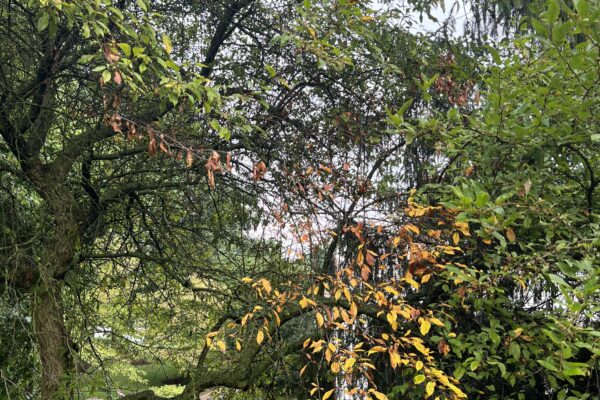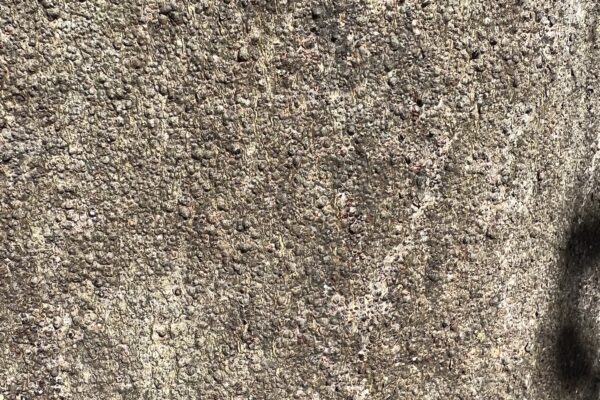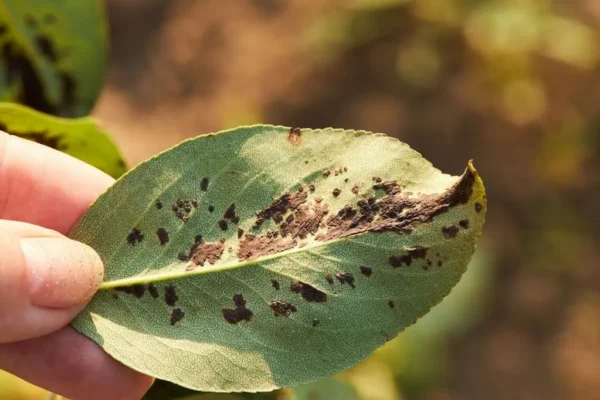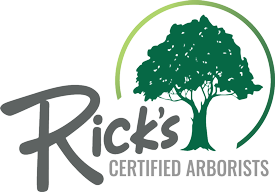Have you noticed anything unusual about your beloved Beech trees? Have their leaves seemed a little off this season? Beech trees are a majestic presence on any property, adding elegance and shade. But a silent threat lurks – Beech Leaf Disease (BLD). One of the most common tree diseases in Pennsylvania, this devastating illness can weaken and ultimately kill these treasured trees, but early intervention by ISA Certified Arborists can help.
Have no fear! Rick’s Certified Arborists, the leading residential tree care team in West Chester, PA, and the surrounding area, is here to save your infected trees. No matter if your property has American Beech trees, European Beech trees, or Oriental Beech trees, we can provide effective and safe treatments.
Contact us today for a professional inspection and help save your trees from Beech Leaf Disease.
We are proud to serve the following communities and beyond:
What Is Beech Leaf Disease?
First discovered in Ohio in 2012, Beech Leaf Disease is a devastating ecological condition that infects and damages the leaves of Beech trees. Caused by toxins, pectinases, phenolics or carotenoids produced by foliar nematode (Litylenchus crenatae). As the infection progresses, it can cause branch dieback and potentially kill trees within a few years, posing a serious threat to beech tree populations in forests across North America, particularly in the northeast. Beech Leaf Disease can spread rapidly, making early intervention extremely important.
Beech Leaf Disease Symptoms
The good news is that Beech Leaf Disease manifests through several distinct symptoms, making it easy for vigilant property owners to take action and call for help at the first sign of trouble.
By being on the lookout for these indications and scheduling treatment with Certified Arborists, you can help save your trees and keep your outdoor spaces looking lush. Here are the most critical Beech Leaf Disease symptoms to be aware of:
- Dark Bands Between Leaf Veins: Resembling stripes, these dark green band-like lesions cause the leaves to curl, become deformed, and eventually drop prematurely.
- Reduced Bud Production: The disease significantly diminishes the tree’s ability to produce new buds, which leads to decreased branch and leaf development in subsequent growing seasons.
- Stunted Growth: Infected trees experience a noticeable reduction in overall growth, with younger trees being particularly vulnerable to severe growth inhibition and potential death before reaching maturity.
- Leaf Thickening and Distortion: Infected leaves become abnormally thick and misshapen, losing their typical smooth and flat appearance.
Preventative treatment will always provide the best results, however recognizing these symptoms early can make a difference in managing the disease effectively and preserving the health and beauty of Pennsylvania’s beech trees.
Comprehensive BLD Diagnosis
An accurate diagnosis is essential for effectively addressing Beech Leaf Disease. At Rick’s Certified Arborists, we carry out a thorough examination of your trees, assessing visual symptoms and conducting tests if necessary. Our experts look for the characteristic dark banding on the leaves and other signs of distress like leaf curling and reduced bud production.
Beyond visual inspection, we may take leaf samples to further analyze, helping to confirm the presence of the disease. This comprehensive approach not only identifies BLD but also distinguishes it from other ailments like Beech Bark Disease and Anthracnose, which can have similar leaf discolorations. With a precise diagnosis, we can formulate the most appropriate treatment plan.
At that point, effective measures to suppress Beech Leaf Disease can be taken. Even if your trees appear unaffected, this disease is moving so quickly through our region, the best course of action is to take preventative steps to protect your trees from its debilitating effects. Treatment starts working during the same growing season as application and offers 2 years of protection.
Tailored BLD Treatment Plans
Every Beech tree is unique, and so is each case of Beech Leaf Disease. Our treatment plans at Rick’s Certified Arborists are designed to address the specific needs of your trees, taking into account their species and stage of the disease. We employ a combination of methods to manage infected Beech trees.
Our treatments utilize the most up-to-date research methods, specifically Macro Injections, which increase the tree’s ability to suppress infection by delivering a targeted nematicide that directly addresses the nematodes responsible for Beech Leaf Disease. These trunk injections are particularly effective in managing persistent issues like nutrient deficiencies and systemic diseases, providing a 90%+ efficacy rate and helping to ensure your trees remain healthy and vibrant for years to come.
Additionally, we focus on strengthening the overall health of your trees, making them more resilient to diseases. By tailoring our approach, we aim to restore your trees’ vitality and protect them from future infections. It takes approximately 2 years to get control of the disease.
Ongoing Tree Health & Maintenance
Long-term tree health goes beyond treating immediate disease symptoms. It involves consistent care and maintenance practices that ensure your Beech trees remain healthy and vibrant. Regular monitoring for signs of insects and disease, watering, and fertilization are key components of our ongoing maintenance programs at Rick’s Certified Arborists.
As part of our Customer Care Program, we emphasize the importance of seasonal inspections to catch early signs of stress or disease. These regular check-ups allow us to make timely interventions, addressing potential issues before they become severe and ensuring your trees continue to thrive throughout the year.
Soil Health Improvement Strategies
Healthy soil is foundational to the well-being of Beech trees as it directly impacts the root system and overall tree resilience. We might recommend organic matter additions, such as compost or mulch, or soil injections, to improve soil structure and nutrient availability. Additionally, we may implement soil aeration techniques to enhance root oxygenation. These strategies collectively create an environment where your Beech trees can grow stronger and more resistant to diseases like BLD.
Why Choose Certified Arborists for BLD Treatment
Choosing Certified Arborists for treating Beech Leaf Disease ensures you receive expert care backed by extensive knowledge and experience. At Rick’s Certified Arborists, our team has specialized training in diagnosing and treating tree diseases. We stay updated on the latest research and best practices, providing you with cutting-edge solutions.
Moreover, our commitment to customer satisfaction means we work closely with you to understand your concerns and preferences. We offer personalized service so that your trees receive the best possible care tailored to their specific needs.
In addition to handling Beech Leaf Disease, we provide Tree Inspections, Deep Root Feeding, Tree Planting, and other Insect and Disease Control solutions for truly comprehensive care.
Keeping Your Beech Trees Healthy In-Between Professional Upkeep
Maintaining the health of your property involves consistent and proactive care. By adopting simple maintenance strategies, you can significantly contribute to the long-term vitality of your beech trees, complementing the work of professional arborists.
Regularly Look for Signs of Stress
Stress symptoms might develop slowly, so maintaining a habit of monthly checks ensures you catch potential problems early. If you’re wondering how to identify tree diseases and pests, it’s easiest to look for clear irregularities such as yellowing or browning leaves, early leaf drop, and unusual patterns like spots or streaks. Additionally, inspect the trunk and branches for cracks, oozing sap, or signs of decay, such as mushroom growth around the base.
Proper Watering & Mulching
Proper watering is essential, especially during dry spells. Deep, infrequent watering that reaches the root zone helps avoid both overwatering and drought stress. Enhance the tree’s environment by applying a healthy layer of mulch, ensuring it is kept a few inches away from the trunk to prevent moisture buildup and potential fungal issues.
Safeguarding Root Systems
Protecting the tree’s root system and trunk is equally important. Be cautious when using lawn equipment around the tree to prevent mechanical damage, and minimize soil compaction near the roots. During winter, consider using tree guards to deter animal damage, and in the fall, clear away leaves and debris to reduce the risk of disease.
Additional Threats to Beech Trees to Be Aware Of
Aside from Beech Leaf Disease, there are several other threats to Beechtrees, such as Beech Bark Disease, Beech Anthracnose and various pests such as Beech Blight Aphid. Beech Bark Disease occurs when the tree is first infested by a scale insect that creates wounds, allowing fungal pathogens to invade and spread. This condition can weaken the tree significantly, leading to decay and eventual death.
Additionally, Beech trees are susceptible to damage from pests like the Beech Blight Aphid and Beech Scale insect, which can harm the tree’s health by feeding on its sap and leaving it vulnerable to further infestations or diseases. Environmental stressors, including drought, soil compaction, and pollution, can exacerbate these issues by reducing the tree’s ability to resist pests and pathogens.
Keeping an eye on these potential threats and taking proactive management steps can help preserve the health and longevity of beech trees on your property.
FAQs About Beech Leaf Disease Treatment
How long does it take for a tree to die from BLD?
The timeline varies based on tree health, environmental factors, and the severity of infestation. Trees may decline over several years, with a noticeable thinning of the tree canopy and dieback before death.
Can BLD harm other tree species and plants?
Currently, BLD is specific to Beech trees and does not spread to other tree species. However, the Nematode’s presence in soil could potentially affect future Beech plantings in the same area.
Are there natural predators for the Nematodes causing BLD?
Research is ongoing to identify natural Nematode predators or biocontrol agents. At present, no widely implemented natural control methods exist.
Will I need repeated BLD treatment applications?
Yes, repeated treatment applications may be necessary. Beech Leaf Disease (BLD) is a persistent condition, and treatments such as Trunk Injection Nematicides or Foliar Tree Sprays typically need to be applied every 2 years or as recommended by an arborist. This is because the Nematodes causing the disease can reinfest trees, and ongoing management helps keep their populations in check.
Does BLD affect only mature trees?
No, BLD affects both young and mature Beech trees. In fact, saplings and younger trees are often more vulnerable and may show symptoms earlier, such as shriveled or deformed leaves, which can stunt their growth.
Call Now for BLD Treatment in West Chester, PA
Don’t let Beech Leaf Disease compromise the beauty and health of your trees. If you’ve noticed symptoms like dark leaf bands or premature leaf drop, it’s time to act. Rick’s Certified Arborists is here to provide expert diagnosis and practical treatment plans.
Are you ready to protect your beloved trees and preserve the natural beauty of your property? Contact us today to schedule a consultation!



